Discover 11 hidden attractions, cool sights, and unusual things to do in Dorking (United Kingdom). Don't miss out on these must-see attractions: Box Hill, St Martin's Church, and Abinger Castle. Also, be sure to include Pixham in your itinerary.
Below, you can find the list of the most amazing places you should visit in Dorking (England).
Table of Contents
Box Hill
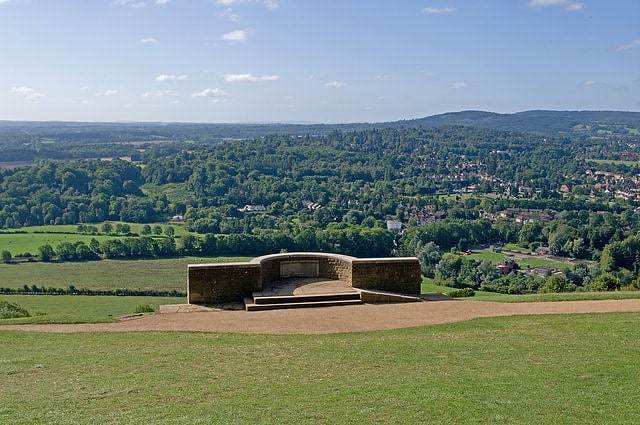
Hill in England. Box Hill is a summit of the North Downs in Surrey, approximately 31 km south-west of London. The hill gets its name from the ancient box woodland found on the steepest west-facing chalk slopes overlooking the River Mole. The western part of the hill is owned and managed by the National Trust, whilst the village of Box Hill lies on higher ground to the east. The highest point is Betchworth Clump at 224 m above OD, although the Salomons Memorial overlooking the town of Dorking is the most popular viewpoint.
Box Hill lies within the Surrey Hills Area of Outstanding Natural Beauty and forms part of the Mole Gap to Reigate Escarpment Site of Special Scientific Interest. The north- and south-facing slopes support an area of chalk downland, noted for its orchids and other rare plant species. The hill provides a habitat for 38 species of butterfly, and has given its name to a species of squash bug, now found throughout south-east England.
An estimated 850,000 people visit Box Hill each year. The National Trust visitors' centre provides both a cafeteria and gift shop, and panoramic views of the western Weald may be enjoyed from the North Downs Way, a long-distance footpath that runs along the south-facing scarp slope. Box Hill featured prominently on the route of the 2012 Summer Olympics cycling road race events.[1]
St Martin's Church
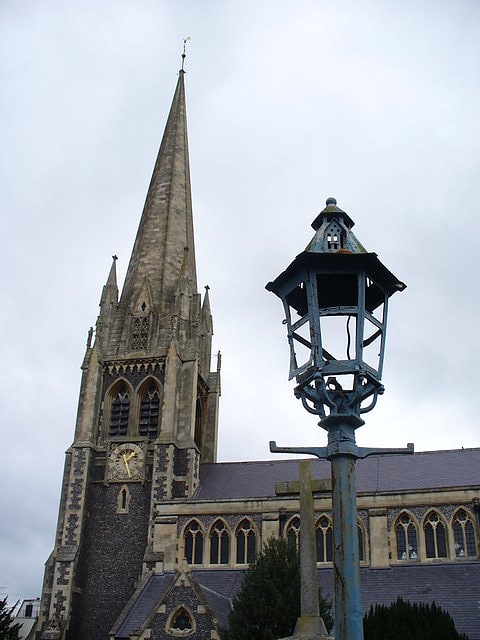
Parish church in Dorking, England. St Martin's Church is an Anglican parish church in Dorking, Surrey. It is a Grade II* listed building and surviving parts of the structure date back to the Middle Ages. It in the archdeaconry of Dorking, in the Diocese of Guildford. The church is the main Anglican parish church in Dorking and was refurbished to the designs of Henry Woodyer.[2]
Address: Church St, RH4 1DW Dorking
Abinger Castle

Abinger Castle is an earthwork motte and bailey that was topped with a small wooden fortress. It is located in Abinger Common, between Guildford and Dorking in Surrey, England.[3]
Pixham
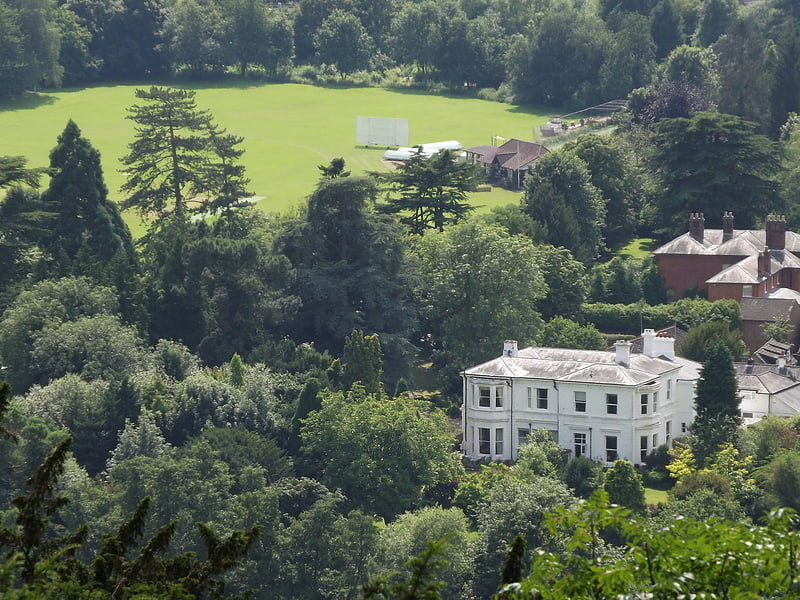
Pixham is a chapelry within the parish of Dorking, Surrey on the near side of the confluence of the River Mole and the Pipp Brook to its town, Dorking, which is centred 1 km southwest. The town as a whole, uniquely in Surrey, has three railway stations; Pixham adjoins or is the location of two of the three; and is near the junction of the A24 and A25 main roads.
Until 1910 watermills principally for corn grinding and for fulling at Pixham Mill operated, however its agricultural land has been converted to other use. At the 2011 Census the main land use was residential land; its main business being the head office of Friends Provident (which has since been taken over by Aviva), small employers include a school, large inn and a waste water treatment works. Pixham covers 117 hectares (290 acres).[4]
Hackhurst and White Downs
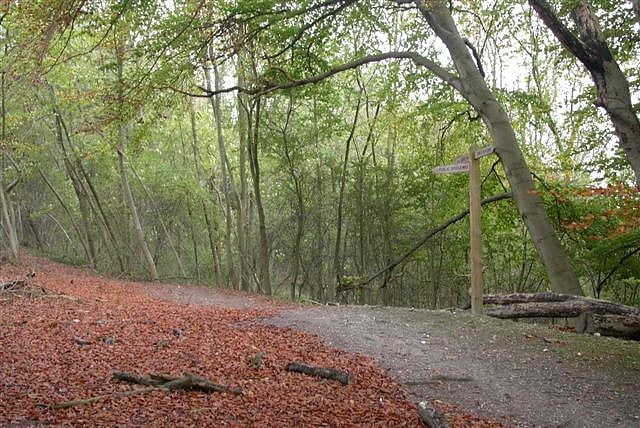
Scenic spot in Dorking, England. Hackhurst and White Downs is a 185.1-hectare biological Site of Special Scientific Interest west of Dorking in Surrey. White Downs is a Nature Conservation Review site, Grade 2, and part of it is in the 200-hectare White Downs nature reserve, which is owned by the Wotton Estate and managed by the Surrey Wildlife Trust. Hackhurst Downs is a 29.9-hectare Local Nature Reserve, which part of the 40-hectare Hackhurst Downs nature reserve, which is owned by Surrey County Council and also managed by the SWT.
This steeply sloping land is a shared escarpment with Ranmore Common, amounting to an almost whole section of the North Downs, which has grassland, secondary woodland and scrub. It has a rich invertebrate fauna with forty species of butterfly, including adonis blue, chalkhill blue, brown hairstreak, Duke of Burgundy fritillary, marbled white and silver-spotted skipper.[5]
Broome Hall

Broome Hall is a grade II-listed country house with grounds including cottages and outhouses on the wooded, upper southern slopes of the Greensand Ridge near Coldharbour in Surrey, England.
It was built around 1830 for the politician and printer Andrew Spottiswoode, and had a succession of similarly wealthy family owners before the main house was converted into eleven flats, each separately owned, in the late 20th century. Broom(e) refers to the genus (and specifically several species) of often flowering plants (genisteae) which, with evergreens, dominate the sandy soil.[6]
Abinger Common War Memorial
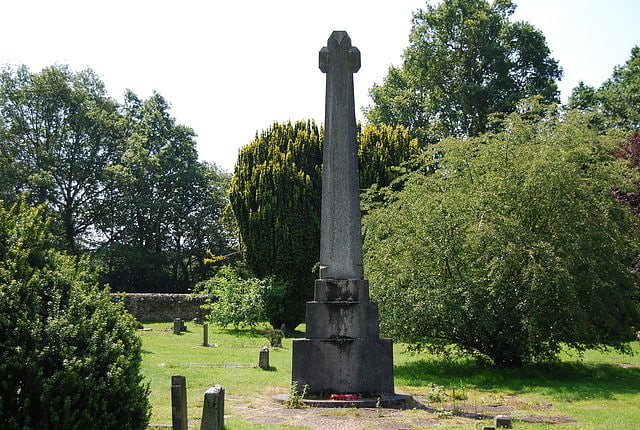
Abinger Common War Memorial is a First World War memorial in the village of Abinger Common in Surrey, south-eastern England. The memorial was destroyed by a German bomb during the Second World War and rebuilt in the late 1940s. One of 15 war crosses by Sir Edwin Lutyens, it is a grade II listed building.[7]
Wotton and Abinger Commons
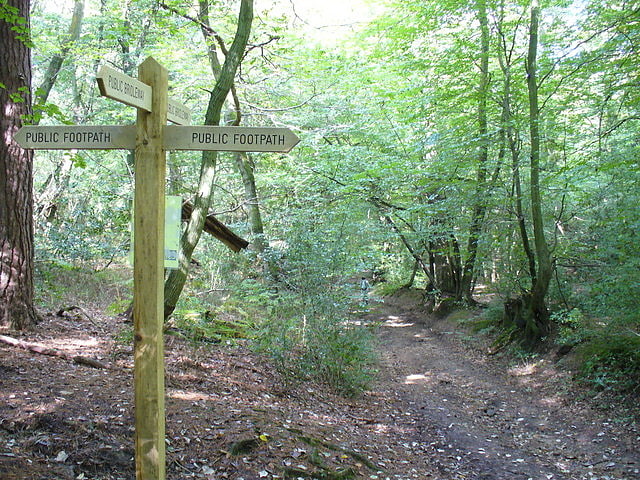
Wotton and Abinger Commons is a 324-hectare nature reserve south-west of Dorking in Surrey. It is managed by the Surrey Wildlife Trust. Part of it is in Leith Hill Site of Special Scientific Interest
Abinger Common, which was formerly a grazing heath, is a wood with sessile oak dominant and a shrub layer of holly and bilberry. Wotton Common has many paths and bridleways through calcareous grassland, heath and woodland.
The site has several entrances listed on the reserve website.[8]
Leith Hill

Hill in England. Leith Hill in southern England is the highest summit of the Greensand Ridge, approximately 6.7 km southwest of Dorking, Surrey and 40.5 km southwest of central London. It reaches 294 m above sea level, and is the second highest point in southeast England, after Walbury Hill in southwest Berkshire,. Leith Hill is the highest ground for 79 km.
Four areas of woodland surrounding the hill comprise the 337.9-hectare (835-acre) Leith Hill Site of Special Scientific Interest, although the summit is excluded from this designation.
The nearest railway station is Holmwood station, 3.6 km (2 mi) to the east, served by Southern trains to London Victoria.[9]
Address: Near Coldharbour village, Dorking
St Joseph's Church
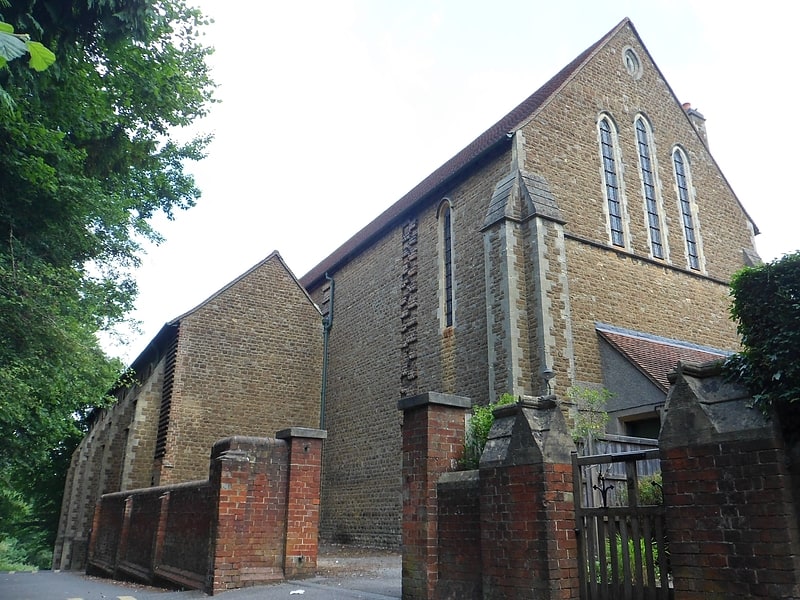
Church in Dorking, England. St Joseph's Church is a Roman Catholic Church in Dorking, Surrey. It was founded in 1872 with help from the Duke of Norfolk. It is situated in Falkland Grove in the town. It is the only Catholic parish church in Dorking and is served by the Diocese of Arundel and Brighton.[10]
Brockham Limeworks
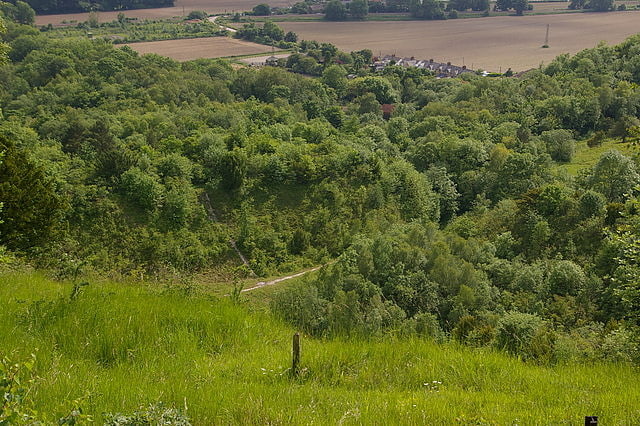
Nature preserve in Betchworth, England. Brockham Limeworks is a 45-hectare nature reserve north of Brockham in Surrey. It is owned by Surrey County Council and managed by the Surrey Wildlife Trust. Part of it is a Scheduled Monument, and it is part of the Mole Gap to Reigate Escarpment Site of Special Scientific Interest and Special Area of Conservation.
Digging on this former chalk quarry continued on the site until 1936. It had two batteries of lime kilns, which have become roosting sites for bats. Some of the floor of the quarry has become species rich chalk grassland, with plants such as broad-leaved helleborine and pyramidal, common spotted, fragrant and bee orchids.
There is access from The Coombe in Betchworth.
From 1978, the limeworks was home to the Brockham Railway Museum, a collection of narrow-gauge locomotives. A short demonstration line was built. The museum closed in 1982.[11]